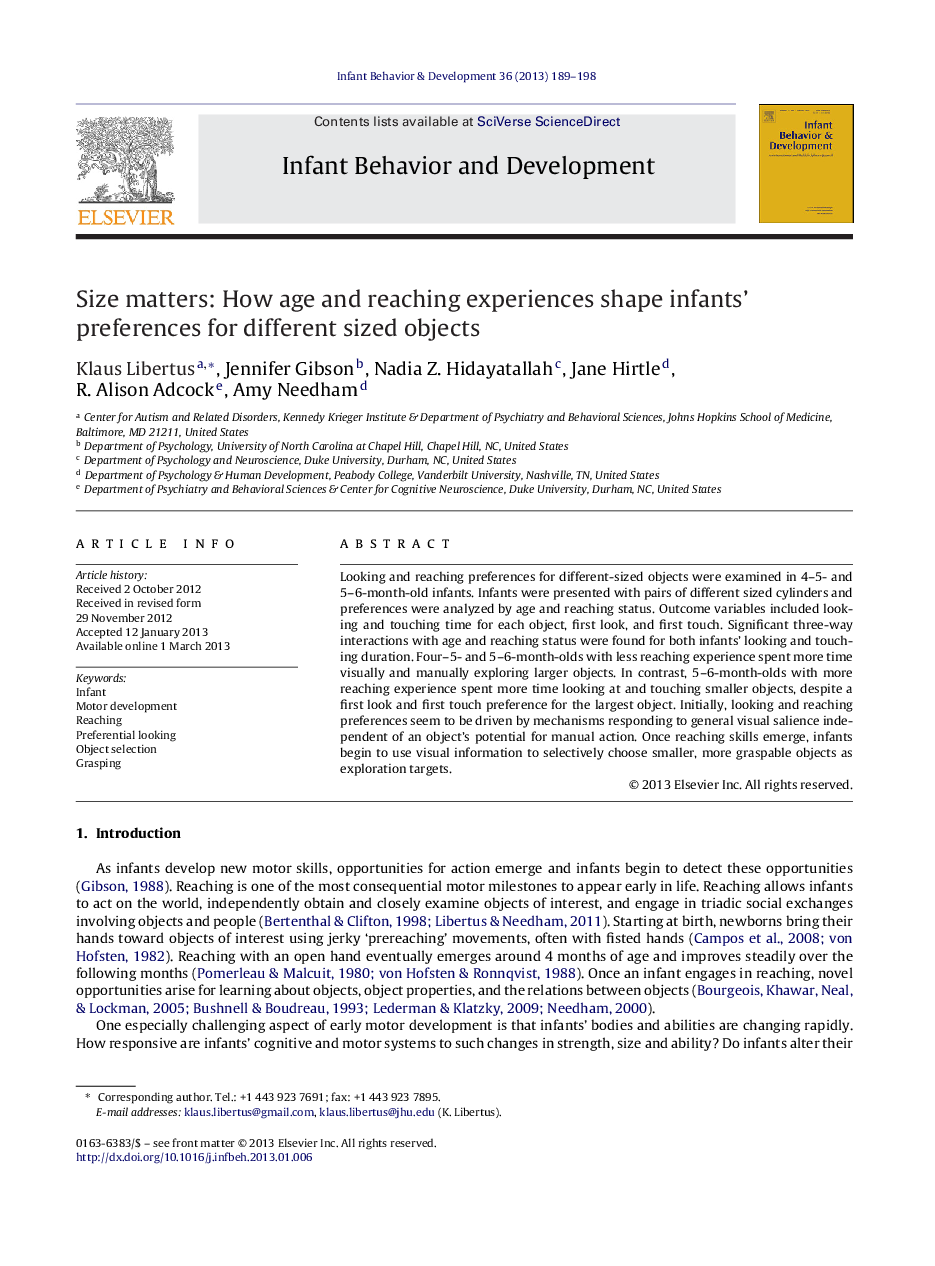| Article ID | Journal | Published Year | Pages | File Type |
|---|---|---|---|---|
| 917210 | Infant Behavior and Development | 2013 | 10 Pages |
Looking and reaching preferences for different-sized objects were examined in 4–5- and 5–6-month-old infants. Infants were presented with pairs of different sized cylinders and preferences were analyzed by age and reaching status. Outcome variables included looking and touching time for each object, first look, and first touch. Significant three-way interactions with age and reaching status were found for both infants’ looking and touching duration. Four–5- and 5–6-month-olds with less reaching experience spent more time visually and manually exploring larger objects. In contrast, 5–6-month-olds with more reaching experience spent more time looking at and touching smaller objects, despite a first look and first touch preference for the largest object. Initially, looking and reaching preferences seem to be driven by mechanisms responding to general visual salience independent of an object's potential for manual action. Once reaching skills emerge, infants begin to use visual information to selectively choose smaller, more graspable objects as exploration targets.
► Visual and manual object preferences were assessed in 4–6-month-old infants. ► We examine influences of overall reaching skill-level on object selection. ► At age 4–5 months, infants choose to look at and touch large objects. ► At age 5–6 months, infants with good reaching skills start to prefer smaller objects. ► Once good reaching skills emerge, infants choose graspable objects for exploration.
